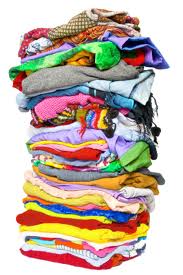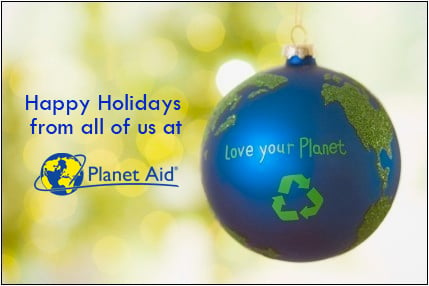Eco-gifting for the Holidays
Thinking about how you can make your holiday gifts a little more environmentally friendly? Before poring over the many items featured in these guides, there is something more fundamental to consider.
 Let's face it. Gift giving during the holidays can be driven more by obligation than sentiment. This may sound a little Scrooge-esque, but it is true nonetheless. It's important to remember that being green means to try and reduce your footprint on the Earth, but it also means to act purposefully and with intention, thus curbing excess and reducing waste.
Let's face it. Gift giving during the holidays can be driven more by obligation than sentiment. This may sound a little Scrooge-esque, but it is true nonetheless. It's important to remember that being green means to try and reduce your footprint on the Earth, but it also means to act purposefully and with intention, thus curbing excess and reducing waste.
Eco-gifting is a term we use to promote a more conscious, purposeful style of giving. The process starts with a few basic questions:
- Who do I really need to buy for and why?
- What do I want to convey through my gift?
- How will my gift be good for the planet?
 By asking yourself these questions, you can begin to make your gifting decisions more thoughtful and deliberate, avoid making wasteful purchases, and minimize your impact on the planet and your wallet. Here are a few additional specifics to consider.
By asking yourself these questions, you can begin to make your gifting decisions more thoughtful and deliberate, avoid making wasteful purchases, and minimize your impact on the planet and your wallet. Here are a few additional specifics to consider.
 Reused or Upcycled
Reused or Upcycled
You may hesitate to give a used item as a gift out of concern for appearing, well… cheap. However, vintage or antique can be cool and you will score points for uniqueness, while also helping to save resources. You can also upcycle your gift, and make something new and exciting out of used items. You can even get the whole family involved and make something together.
Sustainable Material
The materials that make up the stuff we consume fall into two basic categories: sustainable and unsustainable. Sustainable materials are things that are supported by nature and do not deplete non-renewable resources. Fossil fuels are finite and nonrenewable, and anything made from them, such as plastics, are thus unsustainable. Materials such as hemp, bamboo, wool are renewable and in abundant supply. Organically grown fibers and other materials are always more sustainable as they require no fossil fuel inputs to produce.
Quality that Lasts
We all want to give the gift that keeps on giving. Quality brands are usually more durable, and more eco-friendly for that reason. A long lifespan means not only less waste going to the landfill but less energy consumed and less pollution emitted by having to manufacture replacements when something breaks. This is true for many items, but especially with respect to clothing, which is discussed below.
 Clothing Optional
Clothing Optional
At Planet Aid we are focused on reducing textile waste, and that not only means recycling all that we can but also discouraging the purchase of new clothing as a gift option (we take exception to secondhand clothing purchased at a thrift or vintage shop).
Americans purchase five times more clothes today than they did in 1980 and only wear about 20 percent of the clothes hanging in their closet, while throwing away about 70 pounds per person per year. Given that the manufacture and disposal of clothing produces substantial environmental and social impacts, our culture must begin to change its clothing consumption habit.
That said, if you are dead set on gifting new clothes, at least stick with good quality. Quality clothing withstands washings better and will not fade, stretch, or tear as quickly as clothing being produced by fast fashion retailers.
The Gift of Charity
Rather than buying a gift for someone, consider making a donation in their honor. Most charities allow you to dedicate your online contribution to a specific person during the holiday season.
Planet Aid offers this feature on our donation page and will send a card expressing your holiday wishes to the dedicatee. Your donation will help us continue the work we do in developing nations and would be deeply appreciated.

